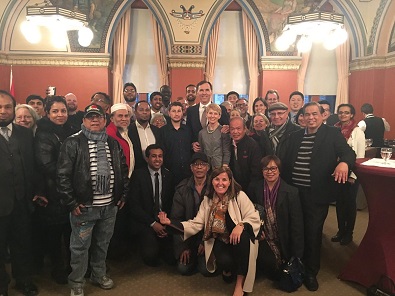Finance Minister Bill Morneau pictured with guests on budget day. Photo courtesy @Bill_Morneau, Twitter.
On Wednesday, federal Finance Minister Bill Morneau delivered a budget that focused on “building a strong middle class.”
Here are some highlights from the budget that have some bearing on Saskatchewan’s northern and Aboriginal communities:
- Dedicating $285 million in 2017-18 to “Furthering Partnerships With Indigenous Peoples.” The biggest part of that is Indigenous and Inuit health, budgeted at $128 million in order to address health gaps between First Nations, Inuit people and rest of population, with $828.2 million over five years for immediate priorities.
- $41 million towards “Renewed Nation-to-Nation Relationship” in 2017-18.
- $30 million for language and culture revitalization in 2017-18.
- $37 million in 2017-18 for “Supporting Indigenous Participation in Fisheries.”
- $11 million per year going towards “Promoting the Use of Restorative Justice Practices” starting 2017-1.8
- $84.9 million over the next five years, and $28.3 million per year ongoing, to build the governance capacity of the Métis National Council and its five provincial Governing Members. Funding will also support Métis identification registries and the review of existing programs and services.
- $18.9 million over five years, starting in 2017–18, and ongoing funding of $5.5 million every four years thereafter, to support Indigenous youth and sport. The feds say this investment will increase support for culturally relevant sport programming for Indigenous youth and children at the community level.
- $81.6 million over five years, starting in 2018–19, to address the most immediate needs of Indigenous police forces, while the Government examines ways to increase the effectiveness of this program.
- $25 million over five years, starting in 2017–18, to support a pilot Indigenous Guardians Program (dealing with Land Management on First Nations).
- Federal government to create new National Housing Strategy, put $225 million “to improve housing conditions” for off-reserve Indigenous people over the course of 11 years
